 |
| Jeff Hall performing FALLING © Anthony McLean |
Last September 9 2016, I went to the opening night of the annual event Festival Quartiers Danses. Jeff Hall was a prolific and well known dancer and choreographer when he had a serious accident on stage that put an abrupt stop to his career and life style. He was told he may never walk again. He was presenting his latest creation Falling. He had continued working in dance but not as a dancer. He wanted so much to dance that he fought to regain his strength and flexibility especially with yoga. He began the show by recounting what he had experienced in his life as a dancer who underwent years of therapy until that night where he would perform his triumph over the disability that had stopped him from dancing. I was taken aback by his Spirit and the extraordinary lesson his dance had taught me about the power of the human Spirit. So I wanted to know more about the power of dance. Dena Davida, an anthropologist who wears many hats, among them art director at Tangente, agreed to be interviewed so she could share her deep understanding of dance with us. She has also graciously assisted in the editing of the article.
 |
| Choreographer : France Geoffroy Title : Confort à retardement (2007) Photographer : Jean-François Déziel |
LG-what is dance?
DD- The largest question
that might be asked on this subject is philosophical. I am an anthropologist. That’s my research and training. The simplest
possible answer is: Dance is defined by those who do it, and so recognize
and name what they do as dance. That is the anthropologist’s eye
view. The traditional dictionary definition of dance is unsatisfying.
They always have some variations of “rhythmic movement to
music” or something that is very old school and only provides partial answer to
the question. So what is dance? It could have a variety of definitions depending on the point of view of the person whom you
 |
| Choreographer : France Geoffroy Title : Confort à retardement (2007) Photographer : Jean-François Déziel |
ask.
Philosophers go as far as asking: Do bees dance? Can any kind of
movement by any living thing be thought of as dance? When we say: “We are
dancing,” in various societies, we might consider different genres
of dance. One interesting topology of four genres of dance proposed by
anthropologist Andriy Nahachewsky is about the motives for dancing:
presentational (we watch others dancing), participatory (we all dance
together), dancing for a higher power, and private dancing. In my thesis I made
a distinction between those who dance professionally, in other words, those who
create and present dance as an art form versus the kind of dancing we do that
is social or recreational dancing. I am thinking here of dancing for fitness
and well-being or even perhaps traditional dances which are kind of social, a way to socially
solidify a community by dancing together for various reasons. Among my
favorite answers to “what is dance?” is: when we move expressively,
say that we are dancing, recognize that what we are doing is
dancing and also understand that we dance for different reasons. Social
dancing is often is often a kind of courtship for instance.
Recreational dancing is often aimed at self-expression or fitness
for instance. My favorite ideas about “what is dance” is that when we move
 |
| Choreographer : Marie-Hélène Bellavance Title : S'ancrer dans la suspension (2007) Photographer : Adrian Armanca |
“we say so” we are
dancing, if we recognize that we are dancing, and then we dance for
different reasons. There are different reasons and motives for
dancing. Social dancing is often a kind of courtship for instance.
Recreational dancing is often for purely self-expression or for fitness
for instance. In the field of contemporary artistic dance, in
which we dance to reflect, critique and to ask questions about society, to
shift and change people’s perceptions, it is a very idea driven art
form for instance. We wouldn’t only dance to display beauty, to offer
a pleasurable experience. We want more than that. We want
dancing that
is meaningful.
LG- I would like you to tell us more about physically and
mentally challenged dancers some of whom are professionals.
DD- I worked on a doctorate dissertation in which the
research question was “why do we dance in this particular way in our
culture?,” in reference to Montreal contemporary dance. One of the many ideas I nurtured, and I am quite certain of my theory right now, is
that some of us are born to dance, that there is a biological
imperative; in fact there are some theories that we are born as art-making
creatures which Ellen Dissanayake terms homo estheticus that we are art making
creatures. You might think of musicians who sit at a piano at 3 years old and
produce some form of music before they can barely function in the world. I
think some of us are born with a particularly acute kinesthetic sense that
really allows us to be more sensitive to the movement of our bodies in space so
we have the potential to become professional dancers. Of course everyone dances
at some time, in some way. The idea of dedicating one’s life to dance, which I
call professional dance, is something we may be born with. It’s embedded in our
sensory system and it isn’t part of having two hands and two legs and all of
our body parts in place or working a certain way. It is about moving oneself
expressively, and that can be done with any body we have. In New York City, it
is now possible to see a good number of physically challenged dancers on
professional stages. There is Menka Nagrani here in Montreal who has been working with the mentally
 |
| Choreographer : Menka Nagrani Title : Le temps des marguerites à la folie ou pas du tout Photographer : Mélanie Fordham |
challenged in a school called Les Muses for mentally
handicapped artists in training. This idea of being “born to dance” means that one has the potential and that if they are nurtured and
encouraged; they can and do become professional dancers. We have a community
in the dance world, and particularly in classical ballet, that has
been reticent to integrate anything other than the “perfect”
body.
 |
| Choreographer : Maïgwenn Desbois Title : Six pieds sur terre (2013) Photographer : Frédéric Chais |
Working through these prejudices has taken a while. It wasn’t until
15 years ago that the Tangente dance presenting organization, for
which I was co-founder and am now curator, offered to the public for the
first time a duet with France Geoffroy a paraplegic dancer from
Montreal and Kuldip Singh-Barmi from the Candoco Dance Company in Britain a
mixed ability or integrated dance company for able bodied and handicapped
dancers. My recollection of that time was that the audience was perplexed,
wasn’t quite certain whether to admire or to pity. We had a long way to go in
terms of looking at expressive dancing by handicapped people. But since that
time we have gained a lot of ground and there are several local companies that
have been presenting professional work by handicapped dancers and for many
years already. Our audiences have moved forward in their thinking, and there
are now university researchers thinking about, for instance, deaf and
physically challenged performers who have proposed that every body, proposes a
certain aesthetic because of whom and how they are. They examine: What is the
aesthetic of a paraplegic dancer in a wheelchair? What can she say and do that
characterize her particular way of moving in the world? Contemporary dance
leaves a lot of room for individual voices. We ask people to develop an
original point of view, and a physically challenged person begins with a very
singular point of view because of their physical limitations and possibilities.
•An update on the dancer France Geoffroy, she is currently collaborating with Marie-Hélène Bellavance on a research project in integrated dance called Quadriptyque. "The web platform Quadriptyque has the mission of documenting the integrated dance practice and we display video / photo from our reasearch but also artcle and historic facts." http://www.quadriptyque.com/
Here are some web sites to inform you on various programs:
Tangente
https://grandsballets.com/en/national-centre-for-dance-therapy/the-centre/
National Centre for Dance Therapy General information:dansetherapie@grandsballets.com 514-849-8681
•An update on the dancer France Geoffroy, she is currently collaborating with Marie-Hélène Bellavance on a research project in integrated dance called Quadriptyque. "The web platform Quadriptyque has the mission of documenting the integrated dance practice and we display video / photo from our reasearch but also artcle and historic facts." http://www.quadriptyque.com/
Here are some web sites to inform you on various programs:
Tangente
https://grandsballets.com/en/national-centre-for-dance-therapy/the-centre/
National Centre for Dance Therapy General information:dansetherapie@grandsballets.com 514-849-8681
 |
| Jess Thom, an artist/super-hero! |
• The Medical approach would tell the person in a wheelchair "you are handicapped, you cannot access the building."
• The Charity approach would say "let's have a fundraiser and make her walk again!"
• The Creative approach "let's build a special ramp that any handicapped person can come up on and into the building."
She introduced us to a form of theatre that is growing world wide where the shows are presented in Relaxed Performance. That is if you have a special need child that would otherwise disturb other theatre goers you will find yourself at home with families just like yours. SEE!
In this video, she is expressing how humor is part of her coping tools. However she told me she was working on a dramatic piece at this time.
For me discovering the talent and Spirit of the artists who must overcome a panoply of personal challenges has been a great source of joy and inspiration!
-LENA GHIO

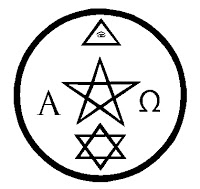















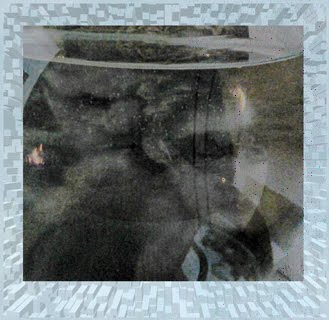
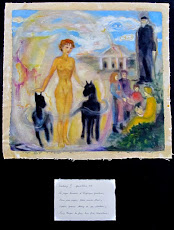



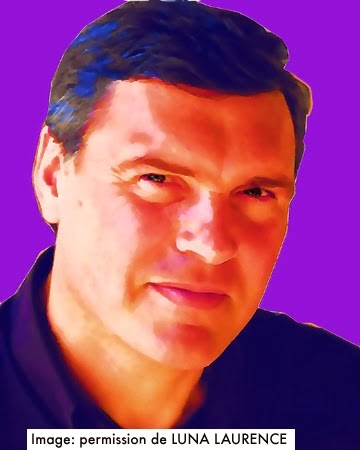
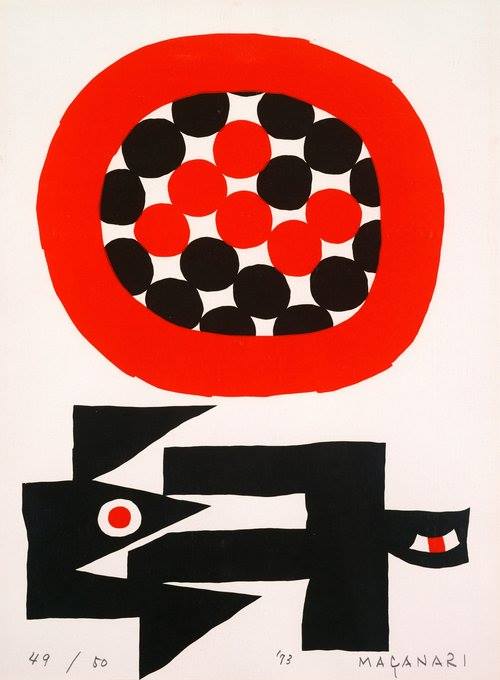

No comments:
Post a Comment